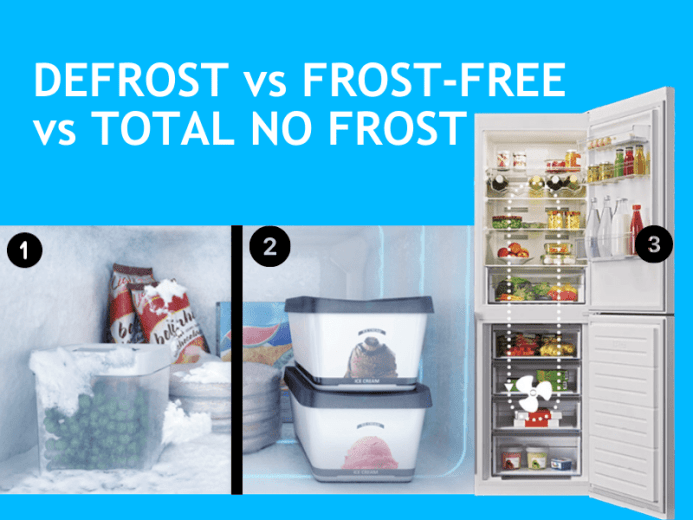Menu

When it comes to choosing a refrigerator, one important consideration is how it handles frost buildup. Traditional refrigerators require manual defrosting, which can be a time-consuming and inconvenient task. However, modern technology has introduced two alternatives: frost-free refrigerators and total no-frost refrigerators. In this article, we will explore the differences between these three types and help you determine which option best suits your needs.
Defrost refrigerators are the most basic and traditional type. They rely on a cooling system that generates cold air, which enters the freezer and fridge compartments. Over time, frost builds up on the freezer walls and surfaces, reducing the appliance’s efficiency and storage capacity. To prevent this, defrost refrigerators must be manually defrosted periodically.
Pros:
Cons:
Frost-free refrigerators, also known as auto-defrost or automatic-defrost refrigerators, revolutionized the way we maintain our refrigerators. These appliances feature a built-in mechanism that periodically activates a heating element to melt any frost buildup. The melted water is then drained away, eliminating the need for manual defrosting.
Pros:
Cons:
Total no-frost refrigerators, also known as frost-free or no-frost refrigerators, take automatic defrosting to the next level. These advanced appliances feature a sophisticated cooling system that evenly circulates cold air throughout the fridge and freezer compartments. This circulating air prevents any frost from forming, eliminating the need for defrosting altogether.
Pros:
Cons:
Choosing the right refrigerator type depends on your lifestyle, budget, and preferences. Defrost refrigerators are the most affordable option but require regular manual defrosting. Frost-free refrigerators provide the convenience of automatic defrosting, maintaining a consistent temperature. Total no-frost refrigerators take it a step further, ensuring no frost buildup and eliminating the need for any defrosting.
Consider your priorities, such as your time availability, storage needs, and long-term convenience, when making a decision. Ultimately, whether you opt for a defrost, frost-free, or total no frost refrigerator, each type offers unique benefits that can enhance your daily life in the kitchen.